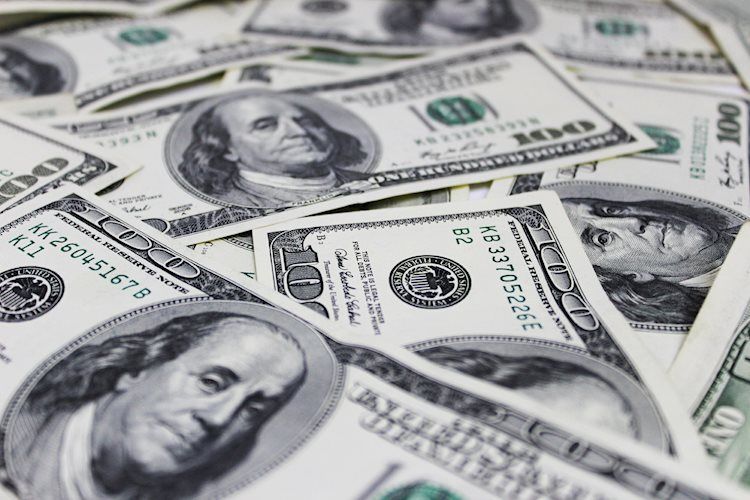- US Dollar recovers ground after mixed August Nonfarm Payrolls data.
- Fed official downplayed discussions of a larger rate cut in September than 25 bps.
- Markets are seeing 40% odds of a 50 bps cut in the next Fed meeting.
The US Dollar Index (DXY), a measure of the US Dollar against a basket of six currencies, recovered its footing on Friday after the release of August Nonfarm Payrolls (NFP) data came in mixed. Following the data, the probabilities of the Federal Reserve (Fed) implementing a 50 bps rate cut in September remains high, but Fed officials might not embrace it yet.
Despite positive economic indicators, the market may be exaggerating its expectations for aggressive monetary policy easing. The current growth rate exceeds the long-term trend, signaling that markets may be overestimating the need for such measures. However, a 25 bps cut is a done deal.
Daily digest market movers: US Dollar recovers as markets digest mixed NFPs
- US Dollar held its ground after a weaker-than-expected NFP report for August, which showed 142,000 new jobs created against a forecast of 160,000.
- Despite the headline miss, the Unemployment Rate fell to 4.2% as anticipated, while Average Hourly Earnings rose 3.8% YoY, topping expectations.
- Probability of a 0.50% rate cut by the Fed in September remains at 40%, but a 25 bps cut is now seen as a mere certainty.
- Following the data, Chicago Fed President Austan Goolsbee indicated that the Fed is beginning to align with the market’s view on rate cuts.
- However, Goolsbee downplayed the discussion of a larger rate cut in September.
DXY technical outlook: DXY bears maintain dominance, resistance at 101.60
Technical analysis suggests a bearish outlook for the DXY index as indicators remain negative, indicating bearish dominance. A recovery above the 20-day SMA average (currently around 101.60) could signal a shift in sentiment.
Supports: 101.30, 101.15, 101.00
Resistances: 101.60, 102.00, 102.30
US Dollar FAQs
The US Dollar (USD) is the official currency of the United States of America, and the ‘de facto’ currency of a significant number of other countries where it is found in circulation alongside local notes. It is the most heavily traded currency in the world, accounting for over 88% of all global foreign exchange turnover, or an average of $6.6 trillion in transactions per day, according to data from 2022. Following the second world war, the USD took over from the British Pound as the world’s reserve currency. For most of its history, the US Dollar was backed by Gold, until the Bretton Woods Agreement in 1971 when the Gold Standard went away.
The most important single factor impacting on the value of the US Dollar is monetary policy, which is shaped by the Federal Reserve (Fed). The Fed has two mandates: to achieve price stability (control inflation) and foster full employment. Its primary tool to achieve these two goals is by adjusting interest rates. When prices are rising too quickly and inflation is above the Fed’s 2% target, the Fed will raise rates, which helps the USD value. When inflation falls below 2% or the Unemployment Rate is too high, the Fed may lower interest rates, which weighs on the Greenback.
In extreme situations, the Federal Reserve can also print more Dollars and enact quantitative easing (QE). QE is the process by which the Fed substantially increases the flow of credit in a stuck financial system. It is a non-standard policy measure used when credit has dried up because banks will not lend to each other (out of the fear of counterparty default). It is a last resort when simply lowering interest rates is unlikely to achieve the necessary result. It was the Fed’s weapon of choice to combat the credit crunch that occurred during the Great Financial Crisis in 2008. It involves the Fed printing more Dollars and using them to buy US government bonds predominantly from financial institutions. QE usually leads to a weaker US Dollar.
Quantitative tightening (QT) is the reverse process whereby the Federal Reserve stops buying bonds from financial institutions and does not reinvest the principal from the bonds it holds maturing in new purchases. It is usually positive for the US Dollar.
